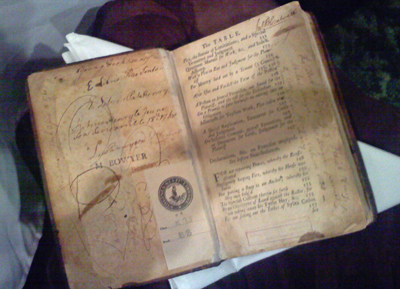I was off last week from the blog, gallivanting around the northeastern states for personal vacation time mixed with research for my historical fiction novel about the American Revolution. The highlight of the research portion of the trip was undoubtedly a stop made in Philadelphia. I had planned for a one-on-one tour with an historian, Bill Ochester, to determine what was where in 1776.
Imagine my delight to discover Bill plays Ben Franklin. He plays him at reenactments, readings of the Declaration and Constitution, and various school presentations among others. As if with a paint brush in his hands that removed the years, he walked me through Philadelphia as it may have been in 1776. In the words of Elton John, “It’s Philadelphia Freedom. I love, love, loved it. Yes I do!”
I learned in 1776:
• The whole of town was about eight by six city blocks in total.
• Houses were built on plots of about one acre and surrounded by gardens.
• Church bells were rung often, sometimes to ward off lighting and evil.
• The streets were swept to keep them clean.
• Elfreth’s Alley existed. Still does. It is the oldest intact residential block in the country.
• Taverns abounded for food, coffee, drink and to conduct business. (Some estimates say one per every 125 people.)
• There were 30,000 people living in what became the capital of the states. (=240 taverns.)
• The tower on Christ’s Church was funded by Ben Franklin. Not because he was religious, but so he could have unlimited access to perform electrical experiments. Shocking.
Click on the thumbnails for enlargements and descriptions.



